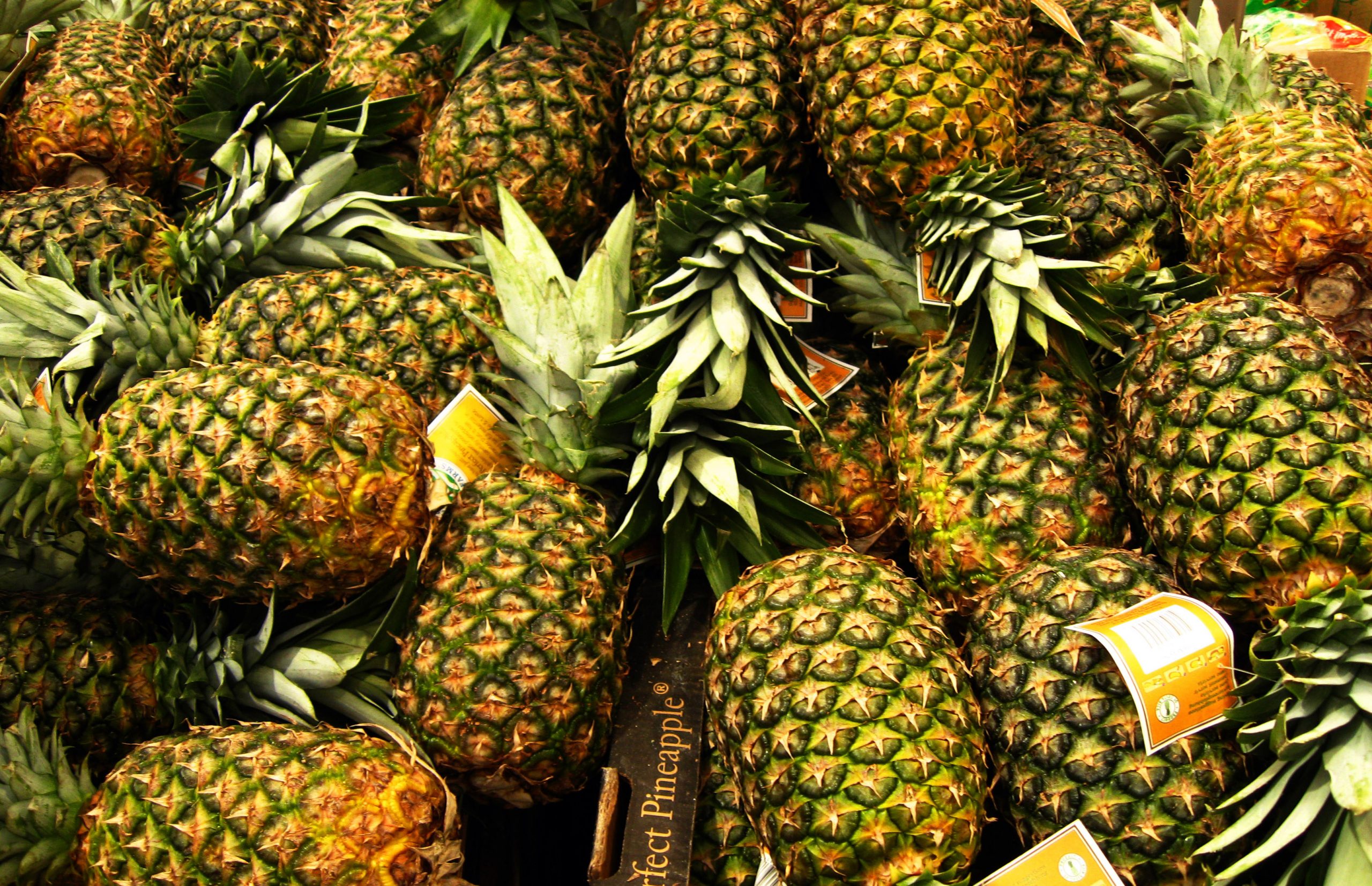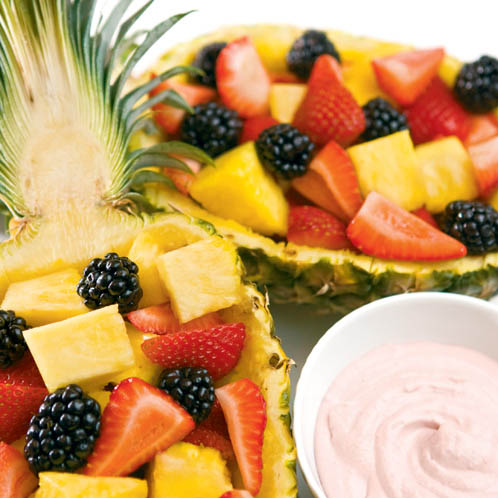Home > Lifestyle > Eats & Drinks > What’s in Season: Pineapple
What’s in Season: Pineapple

While the temperature may not have reached tropical highs, and we are still shaking off the last of the winter doldrums, the sweet taste of pineapple is ready to whisk you away to an exotic island. Although fresh pineapple is available year round, this fruit hits its peak from March through July.
First introduced to Europeans by Columbus in the 1490s, the pineapple has been prized as a delicacy for hundreds of years.
See more: What Is Yellow Watermelon?
Health Benefits
The garnish on your pina colada is more than just decoration. It delivers valuable nutrition while adding color and flavor, as well.
- One cup of pineapple only contains 76 calories.
- A serving of pineapple boasts 105% of your daily vitamin C and 76.5% of your daily manganese.
- A great source of antioxidants, eating pineapple helps combat cancer, joint pain, heart disease, osteoarthritis and rheumatoid arthritis.
- Pineapple can aid in digestion and reduce inflammation.
- Vitamins and antioxidants found in pineapple also protect against macular degeneration.

Pineapple Production
Pineapples come in two varieties. Cayenne, usually grown in Hawaii, is taller and more cylindrical than the stumpier Red Spanish pineapple usually grown in Florida and Puerto Rico. Both varieties provide a juicy taste of the summer to come.
- Surprisingly, pineapples can be grown almost anywhere if grown indoors in pots.
- You can start a pineapple plant using the top of a store-bought pineapple, which should be dried for a few days after removing the flesh of the fruit.
- You can also plant “suckers” or “slips,” small offshoots of a mature pineapple plant.
- Plant the top or slip in the slightly acidic soil about a foot apart, or in a pot.
- Pineapples do not require much water. Their tough leaves prevent excessive water loss.
- Like many tropical plants, pineapples prefer full sunlight, but they also do well in shade.
- Pineapples take most water and nutrition in through the leaves. Concentrated fertilizers should be avoided, as they will burn the leaves when applied.
- The color of the leaves will indicate if the plant is not receiving enough nutrients by turning a purple color.
Harvesting and Storing Pineapples
A pineapple plant will fruit anywhere between a year to two years, depending on the variety, climate and if you planted a top, sucker or slip. The plant will flower and fruit six months later. Pineapples grown outside of the tropical climate will take longer to flower. The fruit can be harvested by cutting it from the plant when it is fully ripe and yellow. The fruit will not continue to ripen after it has been harvested, so it is best to wait.
A whole pineapple can be wrapped tightly and stored in the refrigerator for up to three days. After this, the fruit should be cut up and can be saved for up to three days.
See more: Go Green: Facts about Green Beans
Whether used as a garnish, in tropical beverages, baked goods or ice cream, pineapples bring nutritional benefits and vibrant color to any dish. Your summer cookout wouldn’t be complete without this juicy delicacy. Check out these mouthwatering pineapple recipes for some delicious ways to use the fruit this season.
Sources: Tropical Permaculture, Cooking Light




[…] Source: 🔗 […]